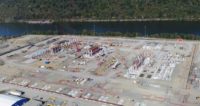Carbon Holdings, Egypt’s largest industrial developer and operator of downstream oil-and-gas projects, hopes to finalize funding for its $7.4-billion Tahrir Petrochemicals project by the end of the year. Key to the deal is a pledge by five financiers to back construction of the complex.
Carbon Holdings CEO Basil El-Baz last year projected the greenfield project would reach financial closure by the fourth quarter and break ground in 2015, but delays in finalizing project financing have pushed back the schedule.
El-Baz was quoted by Reuters in May as saying the company “will be at a position to sign our debt facilities before the end of the year.” He added that the project implementation “is at a very advanced stage” but construction is now expected to begin in sometime in 2016. Operations are now projected to be commence in 2019.
Financiers that have pledged to provide debt financing for the project, located at Ain Sokhna at the southern end of the Suez Canal, include the Export-Import Bank of U.S., the Export-Import Bank of Korea, Korea Trade Insurance Corp., Sace of Italy and the U.S. Overseas Private Investment Corp. Contracts for developing the different components of the petrochemicals complex have been awarded to KBR and General Electric (U.S.), SK E&C (South Korea), Maire Tecnimont (Italy), Drake & Scull International (Qatar), Foster Wheeler (UK) and Espindesa (Spain).
Abu Dhabi-based Gulf Capital, through its credit fund, GF Credit Opportunities, last May announced $25 million of debt financing to support three industrial projects in Egypt, including the Tahrir Petrochemical Complex, which the company CEO Karim El Solh said “is expected to increase Egypt’s overall exports significantly, create 70,000 direct and indirect jobs and boost industrial growth and trade flows.” Carbon Holdings estimates annual revenues from the complex will reach $6 billion, with capacity to raise Egypt’s total exports by at least 25%.
The petrochemicals complex will comprise a 4-million-tonne-per-year naphtha cracker, the only one in Egypt and said to be the world’s biggest, and related downstream facilities with the capacity to produce 1.4 million tpy of polyethylene, 900,000 tpy of propylene, 250,000 tpy of butadiene, 350,000 tpy of benzene and 100,000 tpy of hexene. When completed, it is anticipated to be one of the largest naphtha liquid cracker projects in the world and to create 20,000 jobs.


Post a comment to this article
Report Abusive Comment